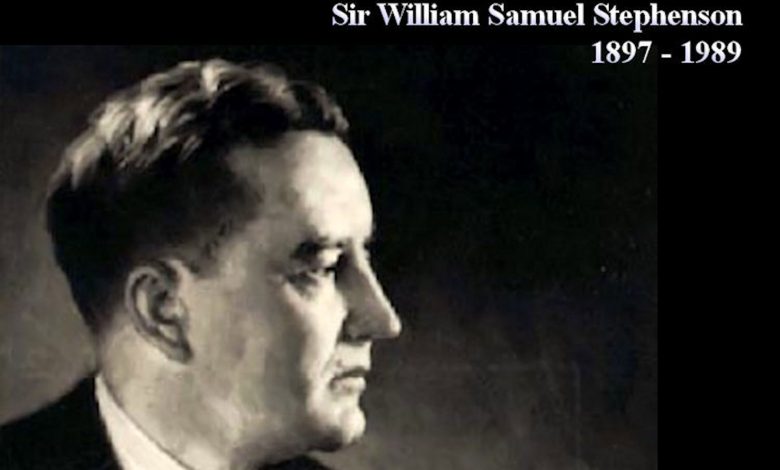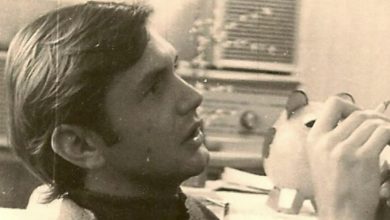who was The Canadian Real-Life James Bond ?

In the thrilling world of espionage, there are real-life heroes whose remarkable exploits rival those of fictional characters. One such figure is William Stephenson, the Canadian who became the true inspiration behind James Bond. Born in 1897, Stephenson’s journey from a decorated First World War air ace to a business titan and spymaster is a testament to his extraordinary life. He played a pivotal role in setting up the British espionage system in the Americas, shaping undercover operations in the United States, and even establishing a spy school in Canada. With his intelligence contributions to the Allies during the Second World War and his significant impact on the field of espionage, Stephenson’s legacy goes far beyond the silver screen.
Key Takeaways
- William Stephenson, the real-life James Bond, was born in 1897 and had a humble childhood before rising to greatness.
- He became a decorated First World War air ace and a successful businessman, eventually transitioning into the world of espionage.
- Stephenson played a crucial role in setting up the British Security Coordination (BSC) in New York City during the Second World War, investigating enemy activities, conducting counter-espionage, and influencing the United States to support Britain.
- His contributions to the Allied efforts included training spies, decoding enemy radio signals, and exposing enemy sabotage rings.
- Stephenson’s involvement in espionage extended beyond the war, with notable operations such as the defection of Igor Gouzenko and his influence on post-war intelligence activities.
- His remarkable achievements and impact on the world of intelligence inspired author Ian Fleming to create the iconic character of James Bond.
From Humble Beginnings to War Hero
Stephenson’s life started with a twist of fate. His birth parents were unable to care for him and gave him up for adoption. He adopted his parents’ surname, Stephenson, and dropped out of school to pursue a career as a telegrapher. Little did he know that greatness awaited him.
When the First World War erupted, Stephenson added a year to his age and enlisted in the military. By the war’s end, he had risen to the rank of captain, survived a German prisoner of war camp, and became a decorated flying ace with 12 victories. Stephenson’s reports as a pilot contained valuable and precise information, earning him the Military Cross and the Distinguished Flying Cross.
From Business Success to Espionage
After the war, Stephenson briefly returned to Canada but faced a setback when his first business venture failed. Undeterred, he ventured to England, where his fortunes changed dramatically. Stephenson designed a device for radio transmission of photographic images, patented it with his partner, and received substantial royalties. With his newfound wealth, Stephenson expanded into various lucrative businesses worldwide, including radio and aircraft manufacturing, plastic fabrication, construction, a film studio, and pressed steel.
It was during his foray into pressed steel that Stephenson’s path led him into the world of espionage. While on a business trip to Germany in the 1930s, he made a shocking discovery. Germany, in violation of the treaty that ended the First World War, had redirected its steel production towards manufacturing armaments and munitions. Stephenson’s findings, though initially ignored by Britain, reached the hands of Winston Churchill, who recognized their significance.
In May 1940, Churchill appointed Stephenson to establish an intelligence service known as the British Security Coordination (BSC) in New York City. While officially serving as the British Passport Control Officer, Stephenson’s real mission was to investigate enemy activities in the Americas, conduct counter-espionage, and influence the neutral United States to support Britain. He became the intelligence liaison between Churchill and U.S. President Franklin D. Roosevelt.
Covert Operations and Counter-Espionage
Stephenson’s leadership of the BSC led to a series of remarkable achievements. The organization trained hundreds of Canadian and American parachutists for missions in occupied Europe, decoded enemy radio signals to sink German submarines, and exposed a vast German sabotage ring in Latin American republics. BSC played a crucial role in the penetration of enemy diplomatic missions, uncovering their secret codes and ciphers.
In collaboration with the U.S. Federal Bureau of Investigation, the BSC successfully arrested enemy agents and dismantled a spy ring operating in North America. Stephenson’s efforts paved the way for the establishment of the U.S. Office of Strategic Services, which eventually evolved into the Central IntelligenceAgency (CIA), with his friend Bill Donovan at its helm.
Defending Democracy and Uncovering Espionage
Stephenson’s role extended beyond the Second World War. In 1954, he played a significant part in the defection of Igor Gouzenko, a Soviet cipher clerk in the Ottawa embassy. Gouzenko’s defection exposed a widespread espionage network, including the involvement of Soviet spies in North America. Stephenson recognized the danger faced by Gouzenko and ensured the safety of him and his family before the Soviet secret police could reach them. The revelations from Gouzenko’s defection led to convictions and punishments for those involved in espionage activities.
Legacy and Recognition
Stephenson’s contributions did not go unnoticed. King George VI knighted him in 1945, and he received the Medal of Merit from U.S. President Harry S. Truman, becoming the first non-American to receive the honor. In 1980, he was invested as a companion of the Order of Canada.
Stephenson’s impact extended to popular culture as well. Ian Fleming, the author behind the James Bond novels, drew inspiration from Stephenson and referred to him as the real spy, stating that “Bond is a highly romanticized version of a true spy.”
FAQ
1. How did William Stephenson become involved in espionage?
William Stephenson’s journey into espionage began during the Second World War. After his business ventures brought him to Germany in the 1930s, he discovered that the country had diverted its steel production toward manufacturing armaments and munitions in violation of the treaty that ended the First World War. Although his findings were initially ignored, they eventually reached the hands of Winston Churchill, who recognized their significance. In May 1940, Churchill appointed Stephenson to establish the British Security Coordination (BSC) in New York City. As the head of BSC, Stephenson’s mission was to investigate enemy activities in the Americas, conduct counter-espionage, and influence the United States to support Britain.
2. How did William Stephenson contribute to the Allied efforts during the Second World War?
William Stephenson played a crucial role in the Allied efforts during the Second World War. As the head of the British Security Coordination (BSC), he trained hundreds of Canadian and American parachutists for missions in occupied Europe, decoded enemy radio signals to sink German submarines, and exposed a vast German sabotage ring in Latin American republics. Stephenson’s expertise in espionage and his ability to penetrate enemy diplomatic missions allowed the BSC to uncover their secret codes and ciphers. Additionally, he collaborated with the U.S. Federal Bureau of Investigation, resulting in the arrest of enemy agents and the dismantling of a spy ring operating in North America. Stephenson’s contributions helped protect Allied interests and further the cause of democracy during the war.
3. Did William Stephenson have any involvement in the film industry?
Yes, William Stephenson had an indirect involvement in the film industry. He served as the inspiration for the fictional character James Bond, created by author Ian Fleming. Stephenson’s real-life achievements and his role as a spymaster influenced Fleming’s depiction of Bond as a highly skilled and resourceful secret agent. While Stephenson himself did not have direct ties to the film industry, his legacy and the character inspired by him have become iconic in popular culture.
4. How did William Stephenson’s espionage efforts impact the United States?
William Stephenson’s espionage efforts had a significant impact on the United States during the Second World War. As the head of the British Security Coordination (BSC) in New York City, Stephenson established an intelligence service that served as a liaison between British and American security organizations. He played a crucial role in training the United States in undercover operations, setting up a spy school in Canada, and influencing the U.S. to support Britain’s war efforts. Additionally, Stephenson recommended his friend Bill Donovan to lead the U.S. Office of Strategic Services, which later evolved into the Central Intelligence Agency (CIA). Stephenson’s collaboration with U.S. intelligence agencies helped strengthen the Allied cause and contributed to the overall war effort.
5. How did William Stephenson contribute to the Allied intelligence network?
William Stephenson’s contributions to the Allied intelligence network were significant. As the head of the British Security Coordination (BSC), he established connections and cooperation between U.S. and British security organizations. Stephenson’s expertise in espionage allowed the BSC to penetrate enemy diplomatic missions, uncover secret codes and ciphers, and gather valuable intelligence. His organization trained spies, intelligence officers, and psychological warfare experts, ensuring a robust network of operatives working to gather and assess intelligence. Stephenson’s efforts in establishing and expanding the Allied intelligence network played a vital role in countering enemy activities and ensuring the security of the Allied forces.
6. Was William Stephenson involved in any other notable espionage operations?
Yes, William Stephenson was involved in several notable espionage operations during his career. One suchoperation was his role in the defection of Igor Gouzenko, a Soviet cipher clerk in the Ottawa embassy. Gouzenko’s defection exposed a widespread espionage network, including the involvement of Soviet spies in North America. Stephenson recognized the danger faced by Gouzenko and ensured the safety of him and his family. This led to the revelation of vital information regarding Soviet espionage activities, including the existence of “atom spies” operating in North America. The revelations from Gouzenko’s defection had far-reaching consequences and resulted in convictions and punishments for those involved in espionage.
Another notable operation was the uncovering of a plot by the Bolivian military attaché in Berlin, Major Elias Belmonte, to stage a coup in South America and bring Nazis to power. Stephenson’s organization intercepted a letter from Belmonte, which confirmed the plot. As a result, Bolivia declared a state of siege and rounded up Nazi sympathizers. This operation highlighted the extensive reach and effectiveness of Stephenson’s espionage network in countering enemy activities and safeguarding Allied interests.
7. What recognition did William Stephenson receive for his contributions?
William Stephenson received significant recognition for his contributions. He was knighted by King George VI in 1945, and U.S. President Harry S. Truman awarded him the Medal of Merit, the first non-American to receive this honor. In 1980, Stephenson was invested as a companion of the Order of Canada for his exceptional service to the country. These honors reflect the high regard and appreciation for Stephenson’s invaluable contributions to intelligence and espionage during the Second World War.
8. What was the significance of Camp X in William Stephenson’s espionage operations?
Camp X, located in Whitby, Ontario, played a crucial role in William Stephenson’s espionage operations. The camp served as a training facility for hundreds of spies, intelligence officers, and psychological warfare experts. Operatives trained at Camp X were prepared for missions behind enemy lines, gathering intelligence, and conducting covert operations. Additionally, the camp handled a substantial volume of Allied intelligence traffic to Europe through its radio transmitter, enabling the exchange of tens of thousands of messages per day. The significance of Camp X lies in its contribution to the training and operational effectiveness of Allied intelligence personnel, further strengthening the espionage efforts led by William Stephenson.
9. Did William Stephenson have any involvement in post-war espionage activities?
While William Stephenson’s most significant involvement in espionage was during the Second World War, he continued to have an impact in the post-war period. One notable example is his role in the aftermath of the war in relation to the defection of Igor Gouzenko. Stephenson recognized the danger faced by Gouzenko and ensured his safety, highlighting his commitment to protecting individuals who risked their lives to expose espionage activities.
Additionally, Stephenson’s contributions to intelligence and counter-espionage during the war laid the foundation for future intelligence agencies, such as the CIA. His collaboration with U.S. intelligence agencies and his recommendation of Bill Donovan to lead the U.S. Office of Strategic Services set the stage for the development of American intelligence capabilities in the post-war era. While his direct involvement may have diminished, Stephenson’s legacy and influence on intelligence activities persisted beyond the war.
10. What made William Stephenson the real-life inspiration behind James Bond?
William Stephenson’s extraordinary achievements in the world of espionage and his role as a spymaster were the primary factors that inspired Ian Fleming to create the character of James Bond. Fleming himself acknowledged that Bond was a highly romanticized version of a true spy, with William Stephenson being the real thing. Stephenson’s daring exploits, his involvement in covert operations, and his leadership of the British Security Coordination (BSC) all contributed to his status as the real-life James Bond. Stephenson’s ability to investigate enemy activities, conduct counter-espionage, and influence the United States aligned closely with the adventures and capabilities of the fictional character. Moreover, Stephenson’s role in training spies, his establishment of a spy school in Canada, and his connections to the intelligence community mirrored the fictional world of James Bond. Overall, it was Stephenson’s exceptional career in espionage and his impact on the world of intelligence that made him the true inspiration behind the iconic character of James Bond.
Conclusion
William Stephenson’s life is a testament to the real heroes who operate in the shadows, protecting the interests of nations and shaping history through their courageous actions. From his early days as a war ace to his influential role in espionage during the Second World War, Stephenson’s legacy is one of bravery, ingenuity, and unwavering dedication. His impact extended beyond the war, leaving a lasting imprint on intelligence operations and inspiring the creation of the fictional character James Bond. The world owes a debt of gratitude to William Stephenson, the Canadian who embodied the spirit of a true spy and whose life story continues to captivate and inspire.










